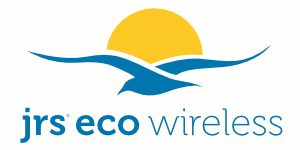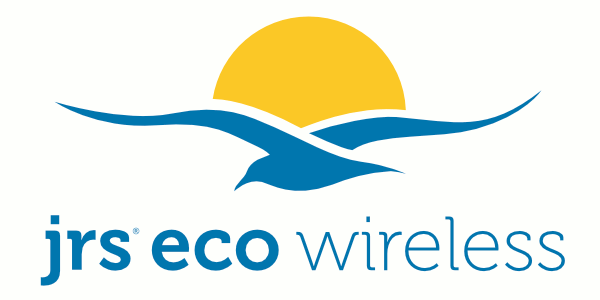How much EMF is too much? Electromagnetic radiation exposure limits, ICNIRP versus SBM
We all know that radiation in a microwave oven is dangerous because you can cook with it. Also, it’s obviously unsafe to stand right next to a cell tower on a building roof. But how much is too much?
In most Western countries, the limits for exposure of citizens to electromagnetic radiation from, for example, cell towers or cell phones, wifi, or magnetic fields from power lines and electric cars, are based on the so-called ICNIRP limits (HF, LF). This “International Commission on Non-Ionizing Radiation Protection,” contrary to what its name might suggest, is a private foundation based in Munich. It sets science-based limits for EMFs. But is there really a scientific consensus on how well that protects us from health risks?
ICNIRP EMF limits: body of literature controlled by 17 authors
The conclusion of Investigate Europe’s investigative journalists in their article ‘How much is safe? Radiation authorities rely on controversial group for safety advice‘ is not exactly reassuring. They interviewed researchers Nordhagen and Flydal, who published a critical review of the ICNIRP-2020 exposure limits in Reviews on Environmental Health. Their analysis shows that the underlying body of literature of the ICNIRP-2020 comes from a network of authors with only 17 researchers at its core, most of whom are themselves affiliated with the ICNIRP. The spread of 1st authors gives a false impression of broad support. In scientific publications you have 1st author, 2nd author, etc., through to last author. The 1st author does the writing and research work, the last author is the “boss”, e.g. the professor. So the point is, according to Nordhagen and Flydal, that the ICNIRP works with many different, interchangeable, temporary 1st authors, led by the same ‘bosses’ each time. Furthermore, all referenced meta-studies (studies combining many underlying studies) involve authors from the ICNIRP-2020 itself, whereas the studies are presented as coming from independent committees. Finally, referenced publications that are not from the ICNIRP author network are dismissed, falsely interpreted as supporting the ICNIRP-2020, or in reality are not scientific.
Key scientific studies are missing from ICNIRP-2020
ICNIRP limits are primarily based on acute warming effects: more than 1˚C temperature increase in tissue. However, biological effects such as DNA damage at radiation levels well below this warming limit have now been demonstrated in hundreds of studies. In 2016, researcher Starkey looked into the ICNIRP limits. (‘Inaccurate official assessment of radiofrequency safety by the Advisory Group on Non-ionizing Radiation‘, in Rev. Environ. Health.) It turns out that 40 studies showing DNA damage are simply missing, as are 40 studies showing that electromagnetic radiation creates free radicals in the body, and 22 studies showing effects on male fertility. Thus, the ICNIRP has been ‘cherry picking’. It also appears that ICNIRP members have various conflicts of interest and dual roles, and that the funding of ICNIRP is not entirely transparent.
Researcher Hardell from Sweden, member of the WHO IARC committee, is also scathing about the ICNIRP: “In conclusion, this article demonstrates that the EU has given mandate to a 13‑member, non‑governmental private group, the ICNIRP, to decide upon the RF radiation guidelines. The ICNIRP, as well as SCENIHR, are well shown not to use the sound evaluation of science on the detrimental effects of RF radiation, which is documented in the research … These two small organizations are producing reports which seem to deny the existence of scientific published reports on the related risks.” – Appeals that matter or not on a moratorium on the deployment of the fifth generation, 5G, for microwave radiation, L. Hardell & R. Nyberg, MOLECULAR AND CLINICAL ONCOLOGY, 3 Jan 2020.
Criticism of ICNIRP by the Council of Europe
The Council of Europe, known for the European Declaration of Human Rights, in its “Opinion on Health Risks Associated with Electromagnetic Fields,” ruled:
29. The rapporteur underlines in this context that it is most curious, to say the least, that the applicable official threshold values for limiting the health impact of extremely low frequency electromagnetic fields and high frequency waves were drawn up and proposed to international political institutions (WHO, European Commission, governments) by the ICNIRP, an NGO whose origin and structure are none too clear and which is furthermore suspected of having rather close links with the industries whose expansion is shaped by recommendations for maximum threshold values for the different frequencies of electromagnetic fields.
30. If most governments and safety agencies have merely contented themselves with replicating and adopting the safety recommendations advocated by the ICNIRP, this has essentially been for two reasons:
- in order not to impede the expansion of these new technologies with their promise of economic growth, technological progress and job creation;
- and also because the political decision-makers unfortunately still have little involvement in matters of assessing technological risks for the environment and health.
See also:
The ICNIRP Cartel and the 5G Mass Experiment – Joel M. Moskowitz, Ph.D., Director of Center for Family and Community Health, School of Public Health, University of California, Berkeley
World Health Organization, radiofrequency radiation and health – a hard nut to crack (Review) – Lennart Hardell, Int J Oncol. 2017 Aug; 51(2): 405–413.
More and more research shows link between childhood leukemia and power lines – but ICNIRP boosts limits
As the Dutch National Institute for Public Health and the Environment (RIVM) writes in its report 610050007, there are already ten epidemiological studies showing a link between magnetic fields from high-voltage power lines / transformers and childhood leukemia. For this reason, back in 2005 the RIVM published a greatly reduced advisory exposure limit for living under high-voltage power lines of 400 nanoTesla. In 2017, the Dutch government bought out hundreds of homes located under high-voltage lines. (See our article Dutch State purchases 1300 households living under high voltage cable, in Dutch). But what did the ICNIRP do? In 2010, it actually raised the exposure limit for magnetic fields from 100,000 to 200,000 nanoTesla. In doing so, it brushed off the childhood leukemia studies as too weak.
SBM: building biology EMF guidelines, based on people’s experiences
So which guidelines to use? As early as 1992, the “Standard for Building Biological Measurement Technology” was drawn up in Germany by pioneers in the field of so-called building biology, who focus on healthy building and living. In 2015, this guideline was further refined. The SBM-2015 was drafted based on people’s experiences. You can think of it as a “benchmark,” a guideline worth striving for from the perspective of health rather than industry. The SBM-2015 grew out of many tens of thousands of measurements, international scientific research, and more than 25 years of practical experience of (mainstream and alternative) doctors and patients. The SBM-2015 is a guideline that has not (yet) been accepted by governments, and thus has no legal status. The official exposure limits based on the ICNIRP-2020 are several thousand times higher.
Download SBM-2015 guidelines
Download SBM-2015 Instructions and additions
Download BUILDING BIOLOGY STANDARD – Its Story and History
Supported by doctors
The above SBM Guidelines are recommended by the Austrian Medical Chamber (Ärtztekammer ÖÄK) ‘irrespective of the much higher official ICNIRP exposure limits for direct effects’. ÖÄK legally represents the professional, social and economic interests of all Austrian doctors. See the 2012 OÄK Directive for diagnosis and treatment of health problems and diseases related to electromagnetic radiation (page 9). The Austrian Medical Chamber, together with the telecom industry and one of the largest health insurers (AUVA), has also drawn up a directive for the installation of broadcasting installations (October 2014).
What to do?
We need to decide whether exposure to electromagnetic fields should be assessed against the official (and sky-high) ICNIRP limits, or whether precautionary guidelines such as SBM-2015 should be observed. In cases where people have concerns or even health problems, mere reassurance based on ICNIRP-2020 does not answer the question.
The table below shows the differences between government standards and building biology guidelines.
| Low frequency alternating electric field [Volt per meter (V/m)] | Low frequency alternating magnetic field [nanoTesla (nT)] | High frequency electromagnetic radiation [microwatt per square metre (µW/m²)] | |
| SBM Target | <1 | <20 | <0,1 |
| SBM Weak deviation | 1-5 | 20-100 | 0,1-10 |
| SBM Severe deviation | 5-50 | 100-500 | 10-1000 |
| SBM Extreme deviation | >50 | >500 | >1000 |
| ICNIRP | 5000 | 200.000 | 2-10 Million |
Source: “Verband Baubiologie”
References
- Guidelines for Limiting Exposure to Electromagnetic Fields (100 kHz to 300 GHz), International Commission on Non-Ionizing Radiation Protection (ICNIRP), Health Physics: May 2020 – Volume 118 – Issue 5 – p 483-524.
- Else K. Nordhagen and Einar Flydal, “Self-referencing authorships behind the ICNIRP 2020 radiation protection guidelines”, Reviews on Environmental Health, https://doi.org/10.1515/reveh-2022-0037
- S.J. Starkey, “Inaccurate official assessment of radiofrequency safety by the Advisory Group on Non-ionising Radiation”, Rev. Environ Health 2016; 31(4): 493–503.
- L. Hardell & R. Nyberg, “Appeals that matter or not on a moratorium on the deployment of the fifth generation, 5G, for microwave radiation”, Molecular and Clinical Oncology, 3 Jan 2020.
- M. van der Plas, D.J.M. Houthuijs, A. Dusseldorp, R.M.J. Pennders en M.J.M. Pruppers, RIVM, “Rapport 610050 007”, april 2001.
- Council of Europe, “Opinion on Health Risks Associated with Electromagnetic Fields (12608),” May 6th, 2011.
- Institut für Baubiologie + Nachhaltigkeit IBN Maes, “Standard of Building Biology Testing Methods (SBM) 2015”, 2015.
- ÖÄK, Guideline of the Austrian Medical Association for the diagnosis and treatment of EMF-related health problems and illnesses (EMF syndrome), 2012.
- Joel M. Moskowitz, Ph.D., “The ICNIRP Cartel and the 5G Mass Experiment”, University of California, Berkeley, 2018.


